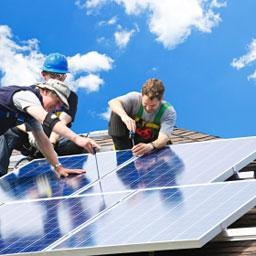What will Georgia Power announce for a 20 year energy plan Thursday?
Will they (1) just double down on their rate-hike boondoggles for
nuclear and
gas,
or (2) they could flip like
Austin Energy in 2003 and
Cobb EMC in 2012
and suddenly go solar?
The wording here looks like it’s going to be the former.
That they even feel compelled to announce some sort of formal plan instead of just
shovelling disinformation out another 50 years
indicates they’re feeling
the pressure to change direction
to real sustainable energy: wind and solar power.
Matt Shedd wrote for WUGATV today,
Georgia Power To Release Energy Plan,
Georgia Power is set to release a 20-year energy plan on Thursday
 which will outline a way for the company and the state to be less
reliant on coal power. The AJC reports that just 5 years ago, the
company’s reliance on coal was at 70 percent.
which will outline a way for the company and the state to be less
reliant on coal power. The AJC reports that just 5 years ago, the
company’s reliance on coal was at 70 percent.
That number has now dropped to 47 percent. These changes are coming
in the wake of Georgia Power’s parent, the Southern Co., being
pushed by environmental rules to rely less on coal. Georgia Power
won approval to buy electricity produced by natural gas from its
sister company Southern Power, which may be part of the company’s
future plans.
Thomas A. Fanning, CEO of Georgia Power’s parent The Southern Company (SO),
has been touting 70% to 35% reduction in coal since at least
May 2012 at the SO shareholder meeting.
Fanning continues to
emphasize nuclear, gas, and “clean coal”
instead of real sustainable energy, namely wind and solar power.
He also continues to assert electricity demand will increase,
while
ignoring conservation and efficiency, which for Georgia
could remove all need for new energy,
enabling solar and wind to shut down more coal and gas plants,
as well as nukes.
So, get out the popcorn and take your bets.
Will it be (1) or will it be (2)?
I’m betting this time it will be (1), but sooner or later it will be (2),
and even Georgia Power, and yes, even Southern Company,
will stop digging in their heels and get on the solar
train to profits, jobs, energy independence, and oh, by the way, clean
air and plenty of clean water.
-jsq

















